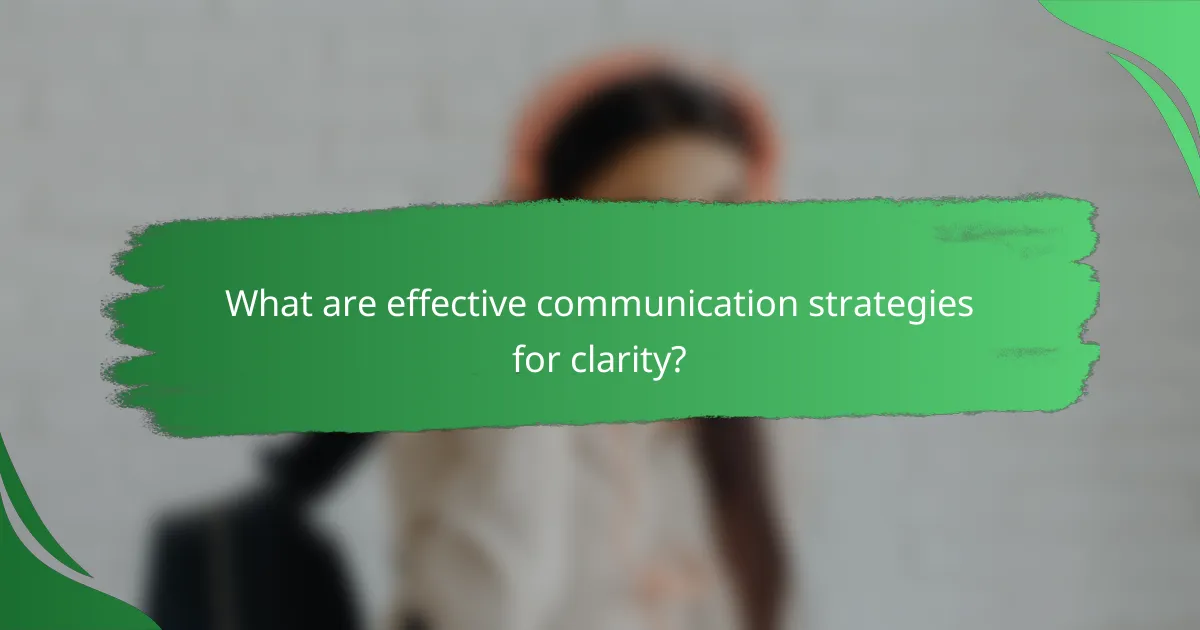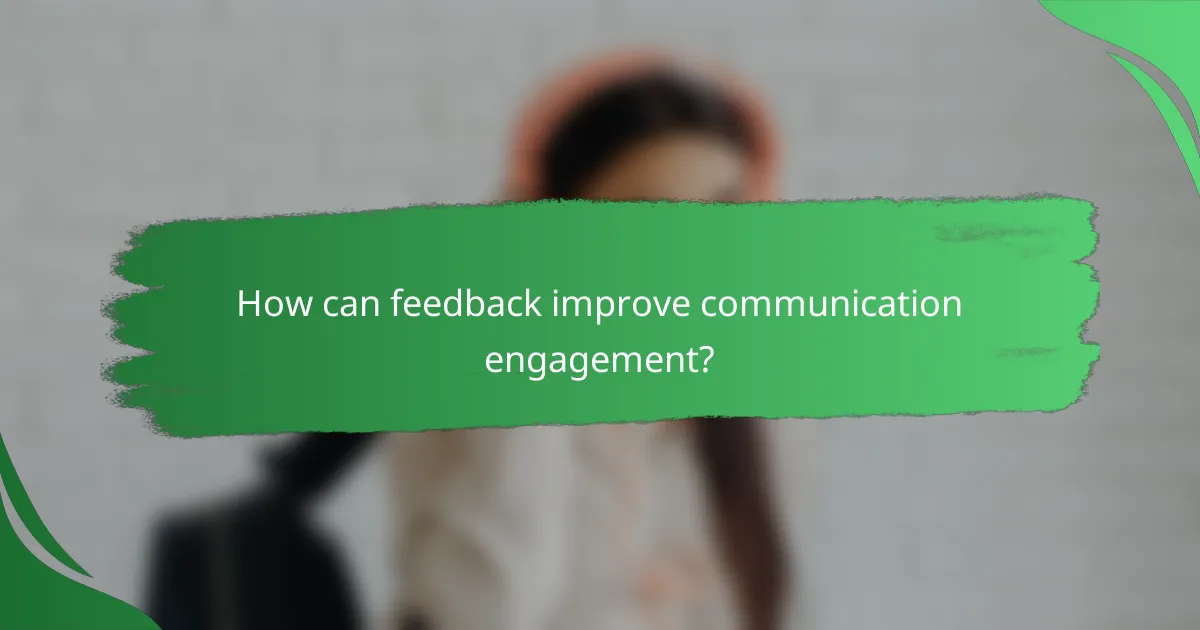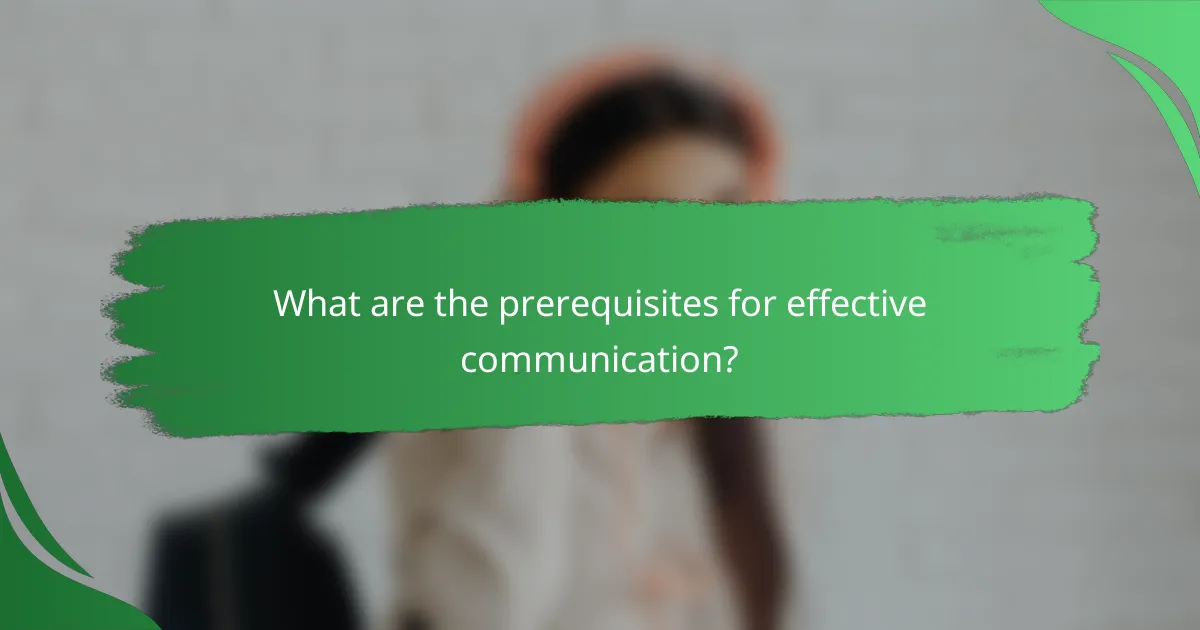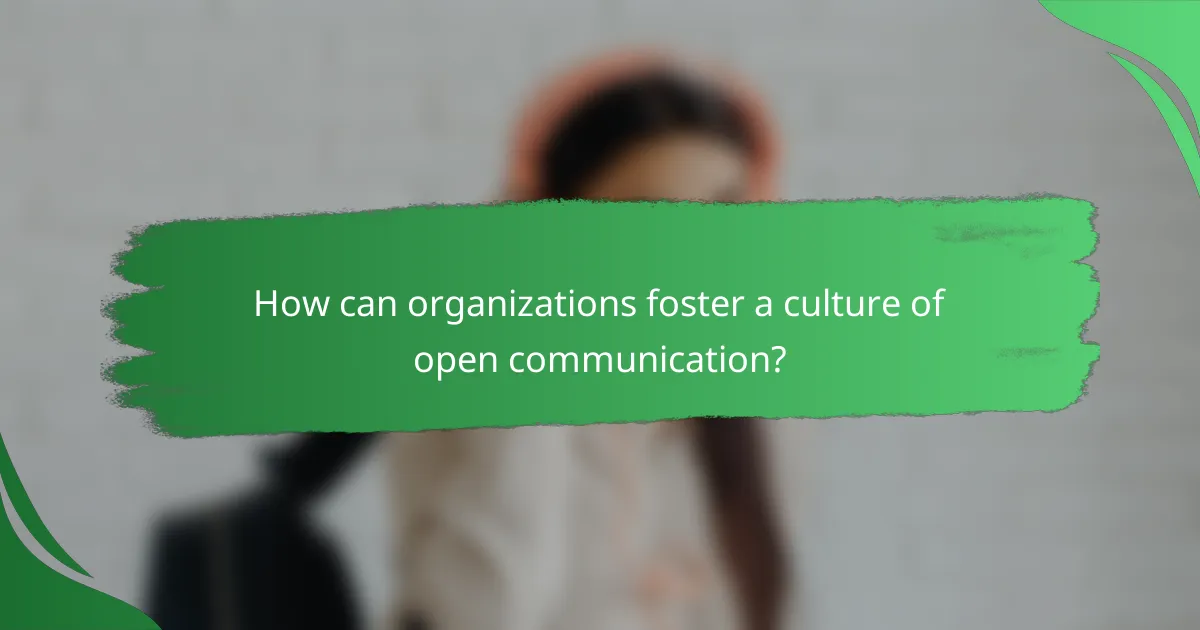Communication barriers can significantly hinder effective interaction, making clarity, feedback, and engagement essential components of successful exchanges. By implementing strategies that prioritize clear messaging and encourage open dialogue, individuals and organizations can foster a more collaborative environment. Additionally, leveraging technology can enhance these efforts, ensuring that communication remains streamlined and misunderstandings are minimized.

What are effective communication strategies for clarity?
Effective communication strategies for clarity focus on ensuring that messages are easily understood and actionable. This involves using techniques that enhance comprehension and engagement, making it easier for all parties to connect and respond appropriately.
Active listening techniques
Active listening techniques involve fully concentrating, understanding, responding, and remembering what is being said. This can include nodding, maintaining eye contact, and summarizing what the speaker has said to confirm understanding. Practicing these techniques fosters a more open dialogue and reduces misunderstandings.
To enhance active listening, consider asking open-ended questions that encourage the speaker to elaborate. Avoid interrupting and give feedback that shows you are engaged, such as paraphrasing their points or asking for clarification when needed.
Clear messaging frameworks
Clear messaging frameworks help structure communication in a way that is straightforward and easy to follow. One effective method is the “who, what, why” approach, where you clearly define who is involved, what is being discussed, and why it matters. This structure can significantly reduce ambiguity.
When crafting messages, aim for brevity and clarity. Use bullet points or numbered lists to break down complex information into digestible parts. This makes it easier for the audience to grasp key points quickly.
Visual aids for understanding
Visual aids, such as charts, graphs, and infographics, can enhance understanding by presenting information in a visually engaging manner. These tools help illustrate complex ideas and make them more accessible. For example, a pie chart can effectively show proportions in a way that text alone cannot.
When using visual aids, ensure they are relevant and clearly labeled. Avoid cluttering visuals with excessive information, as this can lead to confusion rather than clarity. Aim for simplicity to reinforce your message.
Use of simple language
Using simple language is crucial for effective communication, especially when addressing diverse audiences. Avoid jargon and technical terms unless necessary, and when you do use them, provide clear definitions. This approach ensures that everyone can follow along without feeling lost.
Strive for short sentences and straightforward vocabulary. For instance, instead of saying “utilize,” simply say “use.” This can significantly enhance the clarity of your message and make it more relatable to the audience.
Feedback loops for clarity
Feedback loops are essential for ensuring that communication is clear and understood. This involves soliciting input from the audience and making adjustments based on their responses. Encourage questions and provide opportunities for clarification to create a more interactive environment.
To implement effective feedback loops, consider using surveys or informal check-ins after discussions. This allows you to gauge understanding and adjust future communications accordingly. Regularly seeking feedback helps build trust and improves overall communication effectiveness.

How can feedback improve communication engagement?
Feedback enhances communication engagement by fostering an open dialogue and encouraging participation. When individuals feel their input is valued, they are more likely to contribute actively and collaborate effectively.
Regular feedback sessions
Conducting regular feedback sessions creates a structured opportunity for team members to share insights and suggestions. These sessions can be weekly or monthly, depending on the team’s needs, and should focus on both performance and process improvements.
To maximize effectiveness, ensure that these sessions are scheduled consistently and that all participants are prepared to discuss specific topics. This preparation can lead to more productive conversations and actionable outcomes.
Anonymous feedback tools
Anonymous feedback tools allow team members to express their thoughts without fear of repercussions. Platforms like SurveyMonkey or Google Forms can facilitate this process, encouraging more honest and candid responses.
When implementing these tools, ensure that questions are clear and focused. Regularly review the feedback collected to identify trends and areas for improvement, and communicate any changes made as a result to reinforce the value of the feedback process.
Constructive criticism techniques
Constructive criticism techniques focus on providing feedback that is specific, actionable, and supportive. Use the “sandwich” method, where positive feedback is followed by areas for improvement and concluded with encouragement.
Encourage a culture where constructive criticism is seen as a tool for growth rather than a personal attack. This approach helps maintain morale while promoting continuous improvement within the team.
Feedback training programs
Implementing feedback training programs equips team members with the skills to give and receive feedback effectively. These programs can include workshops, role-playing scenarios, and peer review sessions to practice and refine feedback techniques.
Consider tailoring the training to address specific challenges faced by the team. Regularly revisiting and updating the training content ensures that it remains relevant and beneficial for all participants.

What role does technology play in overcoming communication barriers?
Technology plays a crucial role in overcoming communication barriers by facilitating clearer interactions, providing instant feedback, and enhancing engagement among team members. By leveraging various digital tools, organizations can streamline communication processes and reduce misunderstandings.
Collaboration tools like Slack
Collaboration tools such as Slack enable teams to communicate in real-time, reducing delays associated with traditional email. These platforms allow for organized channels, where discussions can be categorized by projects or topics, making it easier to find relevant information.
To maximize effectiveness, establish clear guidelines for channel usage and encourage team members to utilize direct messaging for quick questions. Avoid overwhelming channels with unnecessary notifications to maintain engagement.
Video conferencing platforms
Video conferencing platforms like Zoom and Microsoft Teams bridge the gap between remote and in-person communication by allowing face-to-face interactions regardless of location. These tools enhance clarity through visual cues and body language, which are often lost in text-based communication.
When using video conferencing, ensure a stable internet connection and familiarize yourself with the platform’s features, such as screen sharing and breakout rooms. Schedule meetings at convenient times to accommodate different time zones and maximize participation.
Project management software
Project management software, such as Trello or Asana, helps teams track progress and responsibilities, reducing ambiguity in task assignments. These tools provide a visual overview of project timelines and deadlines, which can enhance accountability and transparency.
To effectively use project management software, regularly update task statuses and encourage team members to comment on progress. Create a shared calendar to keep everyone informed about important milestones and deadlines.
AI-driven communication tools
AI-driven communication tools, like chatbots and virtual assistants, can streamline interactions by automating responses to common queries. These tools can provide instant feedback and support, freeing up human resources for more complex tasks.
When implementing AI tools, ensure they are user-friendly and capable of integrating with existing systems. Regularly review interactions to improve the AI’s responses and maintain a human touch in communications when necessary.

What are the prerequisites for effective communication?
Effective communication requires a clear understanding of the audience, well-defined goals, and strategies to engage participants. These prerequisites ensure that messages are tailored, relevant, and impactful.
Understanding audience needs
To communicate effectively, it is crucial to understand the needs and preferences of your audience. This involves identifying their knowledge level, interests, and potential barriers to understanding. For example, a technical presentation to a non-expert audience should simplify jargon and focus on practical applications.
Consider conducting surveys or informal discussions to gauge audience expectations. This feedback can guide the content and delivery style, ensuring that the communication resonates and engages effectively.
Setting communication goals
Establishing clear communication goals is essential for directing your message. Goals should be specific, measurable, achievable, relevant, and time-bound (SMART). For instance, if the goal is to inform employees about new policies, aim for clarity and retention rather than just delivering information.
Regularly review and adjust your goals based on audience feedback and outcomes. This iterative process helps refine your approach, making communication more effective and aligned with audience needs. Avoid vague objectives; instead, focus on actionable outcomes that can be evaluated post-communication.

How can organizations foster a culture of open communication?
Organizations can foster a culture of open communication by encouraging transparency, providing platforms for feedback, and promoting active engagement among employees. This culture not only enhances collaboration but also boosts morale and productivity.
Encouraging Transparency
Transparency involves sharing information openly within the organization. Leaders should communicate company goals, challenges, and successes to create a sense of trust. Regular updates through newsletters or town hall meetings can help keep everyone informed.
Consider implementing an open-door policy where employees feel comfortable approaching management with questions or concerns. This practice can significantly reduce misunderstandings and foster a more inclusive environment.
Providing Platforms for Feedback
Offering various channels for feedback is crucial in promoting open communication. Surveys, suggestion boxes, and regular one-on-one meetings can help gather insights from employees. It’s essential that these platforms are easily accessible and encourage honest input.
Ensure that feedback is acted upon to demonstrate that employee voices are valued. For example, if a suggestion leads to a change in policy, communicate this back to staff to reinforce the importance of their contributions.
Promoting Active Engagement
Active engagement can be fostered through team-building activities and collaborative projects. Encourage employees to participate in decision-making processes, which can enhance their commitment to the organization. Regular brainstorming sessions can also stimulate creativity and involvement.
Additionally, recognize and reward contributions to encourage ongoing participation. Simple acknowledgments in meetings or formal recognition programs can motivate employees to stay engaged and contribute to a positive communication culture.


